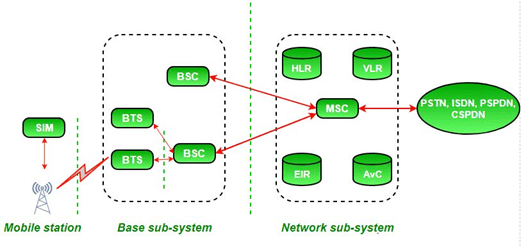Additional Information about Mobile Technologies: Chapter Notes for Class 10 Preparation
Mobile Technologies: Chapter Notes Free PDF Download
The Mobile Technologies: Chapter Notes is an invaluable resource that delves deep into the core of the Class 10 exam.
These study notes are curated by experts and cover all the essential topics and concepts, making your preparation more efficient and effective.
With the help of these notes, you can grasp complex subjects quickly, revise important points easily,
and reinforce your understanding of key concepts. The study notes are presented in a concise and easy-to-understand manner,
allowing you to optimize your learning process. Whether you're looking for best-recommended books, sample papers, study material,
or toppers' notes, this PDF has got you covered. Download the Mobile Technologies: Chapter Notes now and kickstart your journey towards success in the Class 10 exam.
Importance of Mobile Technologies: Chapter Notes
The importance of Mobile Technologies: Chapter Notes cannot be overstated, especially for Class 10 aspirants.
This document holds the key to success in the Class 10 exam.
It offers a detailed understanding of the concept, providing invaluable insights into the topic.
By knowing the concepts well in advance, students can plan their preparation effectively.
Utilize this indispensable guide for a well-rounded preparation and achieve your desired results.
Mobile Technologies: Chapter Notes
Mobile Technologies: Chapter Notes Notes offer in-depth insights into the specific topic to help you master it with ease.
This comprehensive document covers all aspects related to Mobile Technologies: Chapter Notes.
It includes detailed information about the exam syllabus, recommended books, and study materials for a well-rounded preparation.
Practice papers and question papers enable you to assess your progress effectively.
Additionally, the paper analysis provides valuable tips for tackling the exam strategically.
Access to Toppers' notes gives you an edge in understanding complex concepts.
Whether you're a beginner or aiming for advanced proficiency, Mobile Technologies: Chapter Notes Notes on EduRev are your ultimate resource for success.
Mobile Technologies: Chapter Notes Class 10 Questions
The "Mobile Technologies: Chapter Notes Class 10 Questions" guide is a valuable resource for all aspiring students preparing for the
Class 10 exam. It focuses on providing a wide range of practice questions to help students gauge
their understanding of the exam topics. These questions cover the entire syllabus, ensuring comprehensive preparation.
The guide includes previous years' question papers for students to familiarize themselves with the exam's format and difficulty level.
Additionally, it offers subject-specific question banks, allowing students to focus on weak areas and improve their performance.
Study Mobile Technologies: Chapter Notes on the App
Students of Class 10 can study Mobile Technologies: Chapter Notes alongwith tests & analysis from the EduRev app,
which will help them while preparing for their exam. Apart from the Mobile Technologies: Chapter Notes,
students can also utilize the EduRev App for other study materials such as previous year question papers, syllabus, important questions, etc.
The EduRev App will make your learning easier as you can access it from anywhere you want.
The content of Mobile Technologies: Chapter Notes is prepared as per the latest Class 10 syllabus.
 ➢ GSM: Global System for Mobile communications (GSM) is world’s most widely used cell phone technology having 80% mobile phone users. It is a standard developed by the European Telecommunications Standards Institute (ETSI) to describe protocols for second generation (2G) digital cellular networks for mobile phones.
➢ GSM: Global System for Mobile communications (GSM) is world’s most widely used cell phone technology having 80% mobile phone users. It is a standard developed by the European Telecommunications Standards Institute (ETSI) to describe protocols for second generation (2G) digital cellular networks for mobile phones. ➢ The GSM standard was developed as a replacement for first-generation (1G) analog cellular networks, and originally described a digital, circuit-switched network for voice telephony. This was expanded to facilitate GPRS (General Packet Radio Services).
➢ The GSM standard was developed as a replacement for first-generation (1G) analog cellular networks, and originally described a digital, circuit-switched network for voice telephony. This was expanded to facilitate GPRS (General Packet Radio Services). ➢ 3G: 3G is the third generation of Wireless & Mobile technologies. It comes with enhancements over previous wireless technologies, like high-speed transmission, advanced multimedia access and global roaming. 3G is mostly used with mobile phones and handsets as a means to connect the phone to the internet or other IP networks in order to make voice and video calls, to download and upload data and to surf the net.
➢ 3G: 3G is the third generation of Wireless & Mobile technologies. It comes with enhancements over previous wireless technologies, like high-speed transmission, advanced multimedia access and global roaming. 3G is mostly used with mobile phones and handsets as a means to connect the phone to the internet or other IP networks in order to make voice and video calls, to download and upload data and to surf the net. ➢ Wi-Fi (Wireless Fidelity): Wi-Fi is a very common wireless technology that was developed in the 1990s. It is used to connect machines in a Local Area Network (LAN). So, Wi-Fi is like a wireless version of Ethernet.
➢ Wi-Fi (Wireless Fidelity): Wi-Fi is a very common wireless technology that was developed in the 1990s. It is used to connect machines in a Local Area Network (LAN). So, Wi-Fi is like a wireless version of Ethernet. ➢ SMS: Short Message Service (SMS) is a text messaging service component of phone, web, or mobile communication systems, using standardized communications protocols that allow the exchange of short text messages between fixed line or mobile phone devices.
➢ SMS: Short Message Service (SMS) is a text messaging service component of phone, web, or mobile communication systems, using standardized communications protocols that allow the exchange of short text messages between fixed line or mobile phone devices.























